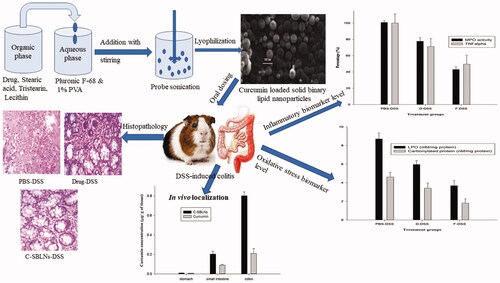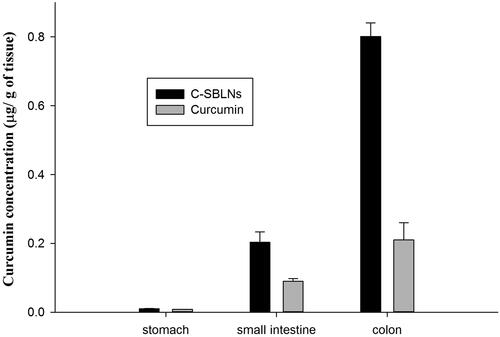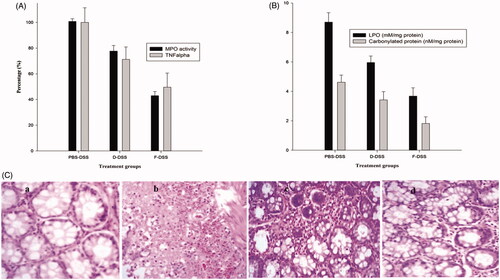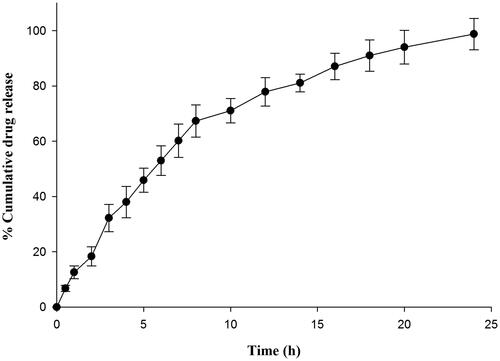Figures & data

Table 1. Various batches of C-SBLNs prepared by varying processing variables.
Figure 1 (A) ATR-FTIR spectra of curcumin, stearic acid, tristearin, lecithin, physical mixture and optimized C-SBLNs formulation, respectively. (B) Thermograms of curcumin, stearic acid, tristearin, lecithin, physical mixture and optimized C-SBLNs formulation, respectively. (C) Powder X-ray diffractograms of curcumin, stearic acid, tristearin, lecithin, physical mixture and optimized C-SBLNs formulation, respectively. (D) Scanning electron microscopy of optimized C-SBLNs formulation.

Table 2. Physical stability of C-SBLNs incubated in simulated gastrointestinal fluids.
Table 3. Effect of storage conditions on the stability of optimized C-SBLNs formulation.
Figure 3 Amount of curcumin in stomach, small intestine and colon after oral administration of curcumin dispersion and optimized C-SBLNs to guinea pigs suffering from colitis, respectively.

Figure 4 Effect of curcumin dispersion and optimized C-SBLNs formulation on (A) inflammatory biomarkers (MPO and TNFα) (B) oxidative stress biomarkers (LPO and protein carbonyl content) and (C) histopathological evaluation of colon of (a) PBS-treated, (b) PBS-DSS treated, (c) curcumin-DSS treated and (d) C-SBLNs-DSS treated guinea pig, respectively. The values of biomarkers of DSS-treated group were considered to be 100 %. Optimized formulation showed statistically significant reduction in per cent level of biomarkers as well as histopathological changes with respect to DSS-treated control (p<.001) as well as curcumin (p<.05).


